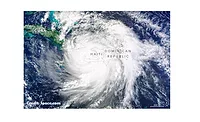Are You Prepared to Offer Hoarding Cleanup?
Studies estimate nearly 5 percent of people in the U.S. are hoarders of some kind. Most of us know of at least one: an elderly aunt or uncle or even a neighbor whose strange collection of grocery bags, bottles, old copies of the local paper and magazines pile up. Recovery is possible, but treatment for the behavior is just one part of the process. Restoring the home to a livable condition is also a major concern. An incomplete cleanup can cause further damage to the property, as well as health risks to current or future tenants in the form of illness-causing bacteria left behind in the environment.
As remediation professionals, our job is not to judge; our job is to clean and sanitize in the most efficient and effective way possible. Understanding the client as well as the unique qualities and conditions present in hoarded homes can help restoration services avoid costly service issues and decide for themselves whether hoarding cleanup is something they are able to offer, or if it is better contracted out to a specialty service company.
What Dangers Are Associated with Hoarding?
Not only is hoarding a nuisance to neighbors; it is also dangerous to the hoarder themselves, and to others who live in or even visit the home. Depending on the level of neglect, a hoarded home can swiftly become unsafe and unlivable.
First responders require additional time and equipment to reach a victim in a cluttered home. As a precaution, many fire departments immediately call a second alarm once they realize the condition of the residence. Some firefighters are trained to recognize signs of hoarding from outside so they know to approach a scene with extra caution. Exits and entrances may be blocked or impassable, and falling debris and other items can lead to serious injuries or even death.
Bacteria and viruses are also matters of concern. Not all biological hazards are visible to the naked eye, and while a family may rid the house of the visible signs of dirt, without proper tools and training, disease causing microorganisms may remain behind which can lead to serious medical complications, including chronic skin conditions and respiratory ailments. Left unchecked for longer periods, hoarding conditions attract vermin and insects that bring disease, or produce mold and other toxic elements.
Snapshot of a Hoarding Case
In 2013, a Dunwoody, GA landlord was contacted by the family of a tenant who had recently passed away. Reluctantly, they described the condition of the unit occupied by the deceased relative. They had already emptied the property of anything of value, leaving the owner to contend with the rest. Surveying the damage, the landlord chose to call biohazard and hoarding cleanup specialists, Aftermath Services LLC, for assistance. Initial inspection of the four room condo revealed a large amount of animal feces and urine throughout the entire unit. Trash also littered the residence, including rotting food, beer bottles and cans, and other household items.
Aftermath technicians immediately began with the waste disposal process; because items of value were already gone, they were able to quickly remove garbage and other belongings. Bio boxes were used to dispose of items impacted by biohazards such as animal feces, while standard dumpsters were employed to haul away unaffected rubbish, including large furniture. Carpets were cut up into manageable sections and thrown out with the appropriate waste, and appliances, broken or filthy, were also discarded. Tacks and small fixtures were remediated as well, or carefully treated during cleaning. Once the debris was gone, the Aftermath crew was able to wash and sanitize surfaces, including walls, ceilings, and floors. Finally, the team employed a HEPA air scrubber system (not an ozone purifier, which are not approved of by the EPA and the Asthma and Allergy Foundation of America and may lead to harmful side effects) to filter particles from the air, removing foul, harmful odors and preparing the condo for future habitation.
Who Are the Clients?
Unlike other forms of remediation, hoarding is unique in that first contact with a restoration company is often initiated by someone other than the victim themselves. The hoarder’s child or another relative (living in the home or elsewhere), or an outside care provider or social services representative, may be the first to seek out services. Local law enforcement and housing authorities are sometimes involved. Other cases, like the one described in Dunwoody, depend on property management to make the call.
Hoarding is a complicated situation not limited by economic factors; it can affect an expensive home, a respectable condo, or a basic rental apartment. Recognized as a mental illness related to OCD, psychologists believe that hoarding begins as a way to cope with other aspects of life which the person feels they are unable to control. Though only one person might have the illness, entire families can be affected and living in the hoarded home, including small children and otherwise healthy adults. Often it takes one of these relatives, or a social or case worker, to convince the hoarder to seek treatment. Sometimes the threat of legal intervention is what prompts a hoarder to seek cleanup services.
Age and gender are not believed to be factors in hoarding, though single hoarders living alone are often elderly. In those cases, belongings accumulate over long periods of time, and adult children are rarely present in the home to monitor the situation. Sometimes physical impairment or illness prevent the person from maintaining a healthy home. Sadly in these cases, the presence of hoarding is likely to go unnoticed until the home owner is either too sick to care for themselves or has passed on, possibly in the home itself. In both situations, family members are left scrambling to take care of their relative as well as the distressed residence. Hiring a hoarding cleanup company saves time and emotional stress, while also limiting the family’s exposure to potentially dangerous biohazards.
Faced with a labor intensive and time consuming task, property managers also represent a significant segment of the potential client base for hoarding cleanup. Like in the Georgia case, without the presence of relatives, landlords may be forced to handle a tenant’s hoarded space. Some owners, focused on recouping lost funds, aim to acquire new tenants as quickly as possible without spending money on additional cleaning crews. Few pause to think about the risks of doing the work themselves, or having a regular janitorial staff manage the job. Others, however, recognize potential complications may arise from improper remediation such as long-term damage, odors, stains, and health-related issues which can lead to costly vacancies, even fines and lawsuits.
Characteristics of Hoarded Homes
Even in minor cases of hoarding, many victims are reluctant to allow repairmen or home inspectors into the residence. Broken appliances and out-of-date electrical, plumbing, and other utilities contribute to the deteriorated state of the home. Leaking pipes can lead to water damage, and clogged drains and sewer blockage create biohazards and may lead to extreme situations down the road.
Long-term hoarding may also seriously damage the structure of a residence. In 2014, a Connecticut woman was found crushed to death in her basement where she’d been living after the first floor of the home gave way. Though this case is an extreme example, structural issues can easily jeopardize the homeowner’s insurance, and may lead to fines and other penalties if the home isn’t kept up to code. Many hoarders will not seek outside assistance until local authorities step in, which means remediation crews will need to decide if the unit is safe enough to perform the work required.
In many ways, the Dunwoody residence is a classic example of a severe type of hoarding. The worst cases usually involve animals: feces, urine, and animal corpses are biohazards that require special attention. Aftermath utilizes a three-step bio-wash process to ensure that all biological materials are removed from a residence, including washing, sanitizing, and deodorizing the entire home, followed by ATP testing to verify the cleaning is thorough and complete.
Not All Remediation Companies Perform Hoarding Cleanup
Fire, mold, and water damage specialists are proficient in a vast array of situations, but not all have the equipment, training, or waste disposal licensing to manage the biohazards present in hoarded homes. While conducting a cleanup, Aftermath employees must follow a plethora of safety regulations enforced by federal, state and local agencies. These same regulations and guidelines affect any person who is potentially exposed to hazardous biological fluids or materials as part of their work activities. Crews wear specialized personal protective clothing to avoid exposure to viruses and bacteria, and learn methods of cleaning designed to achieve the highest levels of sanitation possible.
Aftermath Services LLC is one of the few nationwide specialty cleaning companies to offer hoarding cleanup services and a trusted partner for many restoration firms that do not provide this type of cleaning in-house.
Looking for a reprint of this article?
From high-res PDFs to custom plaques, order your copy today!







